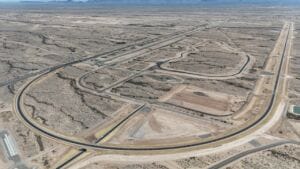Universities across the country have seen a consistent decrease in their student enrollment numbers throughout the past few years, except for colleges in Arizona. Northern Arizona University (NAU) and Grand Canyon University (GCU) specifically are contradicting the trend and setting record breaking numbers of incoming freshmen. Through implementing new financial aid programs, and expanding their universities by blocks, these institutions have found a way to ensure students can all get their chances at receiving a higher education.
LEARN MORE: Here’s why the Arizona economy remains buoyant heading into 2024
Expanding access: NAU introduced a new program, Access2Excellence (A2E) this fall, which offers students a chance to receive full tuition coverage if their family household makes $65,000 or less. The program is unique in the sense that it is offered to not only the university’s incoming freshmen, but also to any of the transfer students applying. NAU’s focus was not to just increase the student population at their Flagstaff campus, but at all of their statewide campuses.
“A lot of programs when you look across the country at financial aid programs, you have to start as a freshman which again, doesn’t really nod to the fact that some students and people have a lot going on, and education might not be the right answer for them right out of highschool,” says Anika Olsen, vice president of enrollment management at NAU.
A2E is intended for Arizona residents as well as any student (in state or out of state) that is a member of the 22 recognized native tribes in Arizona. Due to this, NAU has seen a record number of first year indigenous students as well as students of color in the school’s history. This is something that NAU is extremely proud of, according to Olsen.
“With those populations, when we look at Flagstaff and statewide campuses new [students], we’ve seen a collective 8% increase which really speaks to A2E’s mission and our mission as an institution,” Olsen says.
Something else NAU realized was causing an issue with enrollment was the fact that thousands of Arizona high schools did not offer the 16 courses required for admission into NAU, Arizona State University (ASU) or University of Arizona (UArizona). So NAU decided to change their admission requirement so that these students could have the opportunity to continue their education.
“When we were looking at our admissions criteria through an access lens and learning that almost 50,000 students didn’t have access to all 16 [credits], that didn’t seem equitable,” Olsen says. “So we worked with [Arizona Board of Regents] to create what we call the Admissions Pilot so that students that have those graduation requirements which are 14 core courses, we would like to see their application at NAU and we will admit on those 14 instead of the 16.”
NAU student housing
As time goes on NAU believes that more and more students will be able to see themselves attending the school due to the new programs they have implemented and the university is more than proud of that.
“[We’re] trying to look at removing the traditional barriers admissions and enrollment has had,” Olsen adds.
The university is doing just that and is now seeing an influx and record breaking numbers of incoming students each year. Just this fall the university is housing 10,000 students through dorms and apartments as well as partnered properties on the Flagstaff campus. Olsen mentioned that NAU is already part of the top 1% nationally ranked campus housing universities, the university was able to achieve this by doing their research for what is best for their students.
“We really looked to balance student success as well as housing needs. We know the surrounding Flagstaff community is not inexpensive,” Olsen says. NAU does not currently have any off-campus housing options specifically through the university itself, but there are talks of a master plan that could include new options for student housing on campus.
“We have seen more students wanting to come back on campus for the convenience as well as cost and proximity. And we are really concentrating and have gotten stakeholder input over the last year on our campus master plan and that is exciting. [The master plan] does include additional housing inventory on campus for Flagstaff based students,” Olsen states.
GCU’s campus expansion
Grand Canyon University, similar to NAU, is seeing record numbers of incoming freshmen despite the declining enrollment numbers elsewhere. The university has made tremendous progress in growing its student body, programs offered and size of the campus since university President Brian Mueller took over in 2008. Originally being a small university with less than 1,000 students, GCU’s expansion is quite impressive.
“The university now stretches from 35th Avenue not just to 27th avenue, but across 27th avenue,” Mueller adds.
During a GCU press conference, the university showcased what the university has done with its most recent expansion on 27th avenue and what it plans to do heading into the future. The newest expansion includes a 350,000-square-foot building called Building 71. The structure used to house 3,000 employees who all worked from home during COVID-19 giving GCU the opportunity to do something new and creative with the space.
“Classrooms and laboratories that are going up for the brand new Accelerated Bachelor’s of Science in Nursing (ABSN) program facility,” Mueller claims. GCU has also built a 140,000-square-foot building, right next to Building 71, that will house 33 new businesses with the goal of getting them positive revenue and bringing in more jobs to the West Valley. GCU has also created an organization facility called CityServe that helps give local families household goods they need.
“We have gotten over $10 million worth of brand new household goods to over 20,000 Arizona families from as far North as the Indian Reservations, as far East as Yuma, as far South as Tucson, but mainly in this neighborhood,” Mueller says.
The GCU hotel located on 27th avenue has now become something the university calls Discover GCU. It is a way for GCU to bring high school seniors to Arizona and give them a taste of what being a student at Grand Canyon is like.
“Thirteen thousand students from around the country … will come to Arizona this school year. They will stay in that hotel and visit GCU. 70% of the visiting students will become GCU students and 80% of that 70% will stay in Arizona to help build the workforce,” Mueller claims.
The majority of the new buildings on 27th avenue were built to help not only Arizona, but the West Valley, specifically the people living in the West Side. Mueller has plans for GCU to only continue making it a better place and making the surrounding communities better as well. “This place in 10 years — you won’t recognize it. It is going to be so different if we just keep going,” Mueller says.
GCU and Pono Construction
Butch Glispie is the president of Pono Construction, which is the trusted general contractor for GCU. Their relationship began in 1986 with their first project being the North Rim Apartments for the university. Pono Construction has built almost the entirety of the GCU campus, including dorms, apartments, classrooms, laboratories and athletic fields/facilities. Glispie noticed during his time with GCU that the construction they have been doing has not only affected the university’s students and staff, but has affected the surrounding areas as well.
“Having grown up in west and south Phoenix, I can see firsthand the impact GCU has had on these areas,” he continues. “There has been a remarkable positive change in home values, reduction in crime rates and the creation of jobs for those members of the surrounding areas.”
Glispie and his team have been able to build some large caliber projects in short periods of time that accommodate Grand Canyon’s academic calendar. Pono Construction has built multiple six-story apartment complexes and an entire baseball field, as well as basketball practice facility in periods of eight or nine months. Glispie claims that “teamwork makes the dream work” for Pono Construction and their work at GCU. Over 13 years, Pono Construction has been able to form strong relationships and trust with not only GCU but also the subcontractors they work with on each building.
“We are blessed to have the team we do, without them none of this would have been attainable,” Glispie claims.
One of Pono Construction’s most impressive builds was Ocotillo Hall. It is a five story residence hall located on GCU’s campus. The team had from March 24 to Aug. 13 of 2014 to complete the project for it to be ready by time the next school year began.
“That equated to 143 days of construction for a 135,000-square-foot building,” Glispie says. The team was able to complete the project due to the strong bonds and trust they had built with each other and the companies they worked with.




